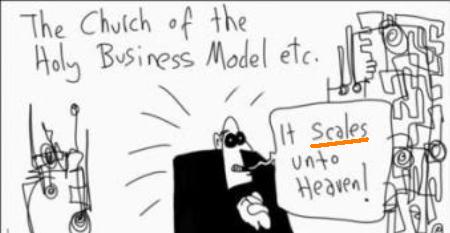
I never cease to be amazed at how many times I receive a “deer in the headlights” stare when I mention the topic of business model architecture to even the savviest of senior executives. While most C-level execs have a general idea of what I’m referring to, it is also quite clear that most can’t even begin to define it, much less articulate the specific constructs of a sound business model. In today’s post, I’ll attempt to define what a business model is, and what it is not…
If I decide to peel back the layers and dig a bit deeper in my attempts at having execs define a business model, what I typically find is that they will confuse business logic and business rules as being a business model when they are simply components thereof. Also, a common response is to confuse a sales engine, fulfillment process, operational process, technology platform, or any number of other areas as business models, where this is not the case. Furthermore, a business plan, strategic plan, marketing plan, capital formation plan, exit plan, etc., are also not business models.
So, since we’ve discussed what a business model is not, let’s now address what it is… A business model is a completely integrated system that aligns core logic, business rules, value propositions, talent and resources, and operational processes in order to catalyze growth in assets (financial and non-financial), competencies, and constituencies, toward the creation of value. Business models must be designed with great care at the outset, but they must also be fluid in order to react to changing market conditions and avoid becoming stagnant. A specific example of this would be that while a company’s business plan may not change for a number of years, the company’s business model consistently evolves, or may even need to be re-engineered to ensure the execution of its business plan.
Put rather simplistically, a business model is the system that defines what creates value, generates growth, and increases revenue and profit within your organization. The primary advantage that a business model has over any number of other strategic frameworks lies in the fluidity of its inherently dynamic nature. Rather than binding the enterprise to a rigid set of static operating principles and procedures, the elasticity and flexibility of a well-defined business model allows the organization to influence necessary inflection points and key business drivers in a real-time manner.
The bottom line in regard to today’s thoughts on business modeling can be summed up in the following three points:
This website uses cookies.